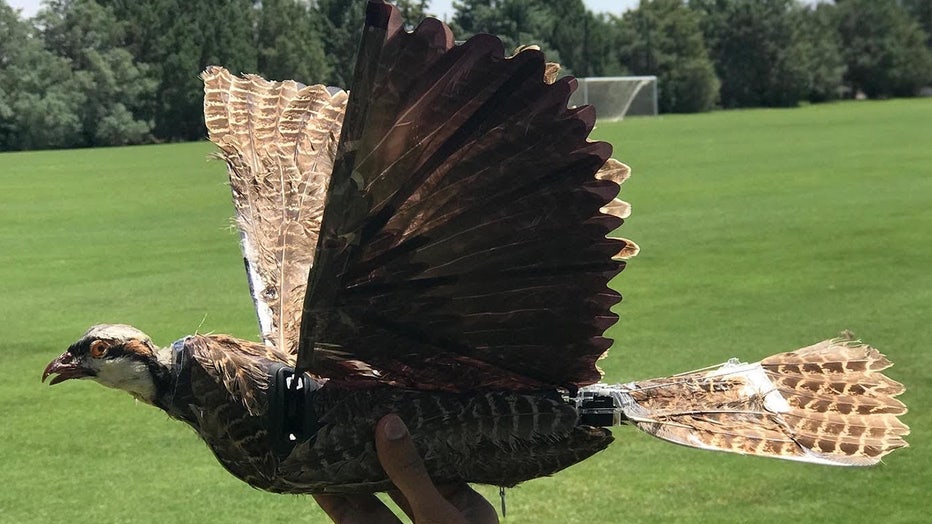Taxidermy bird drones aim to assist, advance wildlife research

Researchers in New Mexico create taxidermy bird drones
Researchers hope to use these taxidermy drones to eventually observe wildlife in close proximity and possibly expand this technology to other areas of research such as space exploration.
Researchers in New Mexico are repurposing taxidermied birds and turning them into drones in the name of stealth wildlife research.
Dr. Mostafa Hassanalian, a mechanical engineering professor at the New Mexico Institute of Mining and Technology in Socorro, and his team are using these converted taxidermy birds to better understand flight formations and patterns of birds.
The goal is to eventually apply what they’ve learned from these drones to the aviation industry and possibly expand that to other areas of research such as space exploration and observing other wildlife besides birds.
"So we do reverse engineering and we re-engineered those taxidermy birds to provide the same locomotion or same flapping motion as they have before they die. So that makes our design much, much easier because there are lots of uncertainties during the design process that we can find out easily once you use their structure," Hassanalian told FOX TV Stations.
Feather colors were also noted as a significant factor as to why some birds are able to fly far and for long stretches of time.

FILE - Taxidermy bird drone developed by Dr. Mostafa Hassanalian and his team. (Mostafa Hassanalian)
Hassanalian said this same principle could be applied to commercial airplanes and could potentially enhance energy efficiency, just as it does for birds.
"Those birds that have black on the top, it absorbs more heat than the bottom side, which is white. So that temperature difference that you measure during noon, which those birds are receiving the maximum radiation, the temperature difference can be from 10 to 25 degrees Celsius.. This change in the flow patterns around them would allow them to gain extra lift and reduce their drag. And they have more than 50% enhancement in their energy efficiency," Hassanalian explained.
Researchers have been able to fly the current taxidermy drones for up to 20 minutes, depending on the weather and environment.
Only smaller species of birds have been used in testing thus far but Hassanalian and his team hope to eventually move up to predatory birds and other larger species.
Right now, the drones are flown by a human pilot on the ground so they can’t venture too far out of their view but the goal is to eventually install an autopilot system and have these drone birds observe wildlife in close proximity without disturbing or frightening them.
Hassanalian and his team are working on a plethora of other projects aimed at mimicking what they see in the wild and implementing them into man-made robotics including one modeled after a dandelion and its seeds and even a pill bug, also known as a roly-poly.
"They have plenty of potential. There are plenty of potential applications for this concept." he said.
This story was reported from Los Angeles.

